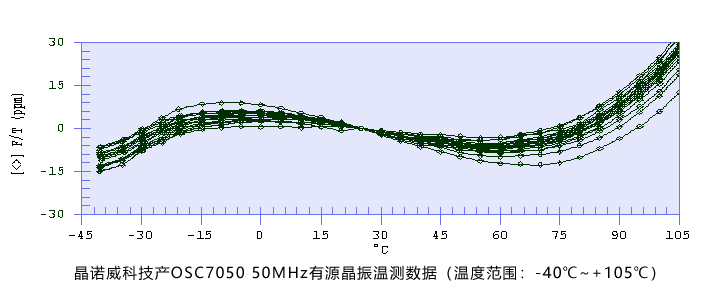
HOW IS CRYSTAL FREQUENCY TOLERANCE & STABILITY OVER TEMPERATURE DEFINED?
晶体的频率容差和温度稳定性是如何定义的?
The frequency tolerance of a crystal or oscillator defined as the initial deviation of a crystal or oscillator frequency when measured at 25°C. The stability over the defined operating temperature range is defined as the Frequency Deviation compared to the measured frequency at 25°C. Tolerance and stability are typically expressed as parts per million and sometimes as a percentage of the frequency.
晶体或振荡器的频率容差定义为在25°C 下测量时晶体或振荡器频率的初始偏差。 在定义的工作温度范围内的稳定性定义为与25°C时测量频率相比的频率偏差。容差和稳定性通常表示为百万分之一,有时表示为频率的百分比。
转换如下:
0.1% 等于 100 PPM
0.05% 等于 50 PPM
0.01% 等于 10 PPM
As frequency tolerances are tightened, costs increase incrementally. Operational Temperatures is the defined band of minimum and maxim band temperatures that the crystal could reasonably expect to encounter in its normal application.
随着频率容差的收紧,其成本也会逐渐增加。工作温度是指晶体在正常应用中可以合理预期遇到的最低和最高温度范围。

Because there are many different applications for crystals they are offered in a variety of temperature options. The unit of measure is usually in degrees Celsius. The wider the temperature band, the more difficult and costly it is to produce the crystal. The tolerance, stability and operational temperature range needs to be more specific in order for us Genuway R&D team to offer solutions that will perform to the customers’ expectations.
由于晶体应用场景的诸多差异,因此它们有多种“工作温度”选项。测量单位通常以摄氏度为单位。工作温度范围越宽,生产晶体的难度和成本就越高。针对频率公差、稳定性和工作温度范围等参数的要求需要具体化,以便晶诺威技术团队为您提供更精准的频率解决方案。




